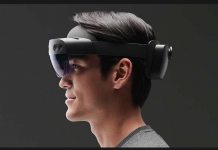In a blog post today, Microsoft has discussed the new partner for the first time. Stryker is known for selling surgical equipment such as drills, forceps, and hip replacement systems. However, the company also builds and sells equipment for operating rooms. By using HoloLens, the company will be able to help hospitals optimize the arrangement of rooms. Microsoft points out that this is traditionally not a simple task. Operating rooms are used by numerous medical practitioners. These professionals use and need different equipment. Finding an arrangement that suits all is difficult. The current situation means hospitals have to engage in an important meeting to decide how to arrange an operating room to suit all disciplines. This meeting is attended by heads of each surgical department and their staff. This time-consuming process is costly and not efficient.
Evolving the current model from 2D to 3D allows professionals to see their layout and manage it in a real-world environment. “Using HoloLens and Stryker’s new By Design solution, hospital stakeholders are now able to envision the ideal operating room configuration with the power of holograms and the benefit of mixed reality,” HoloLens and Windows Experiences general manager Lorraine Bardeen wrote in a blog post. “Instead of needing all the people from each surgical discipline, all the physical equipment required across all medical disciplines, all in one room at the same time, Stryker is now able to modify and build different operating room scenarios with holograms. No more time-consuming sessions where everyone needs to be physically present and no more need to move around heavy and expensive equipment to get a sense for how everything all fits together.”
HoloLens in Development
Stryker is using the Developer Edition of the headset to reach its goals. According to a report earlier in the week, Microsoft has decided to skip version 2.0 of HoloLens and jump straight to version 3.0. Version 2.0 would have been the production level unit that shipped to consumers. Microsoft has long said it wants the headset to be backed by sufficient content before unleashing it on the market. By extending the development phase, the company can achieve that. The other benefit of the delay is that Microsoft can aim for greater leaps in development. HoloLens version 3.0 is expected to arrive in 2019.




